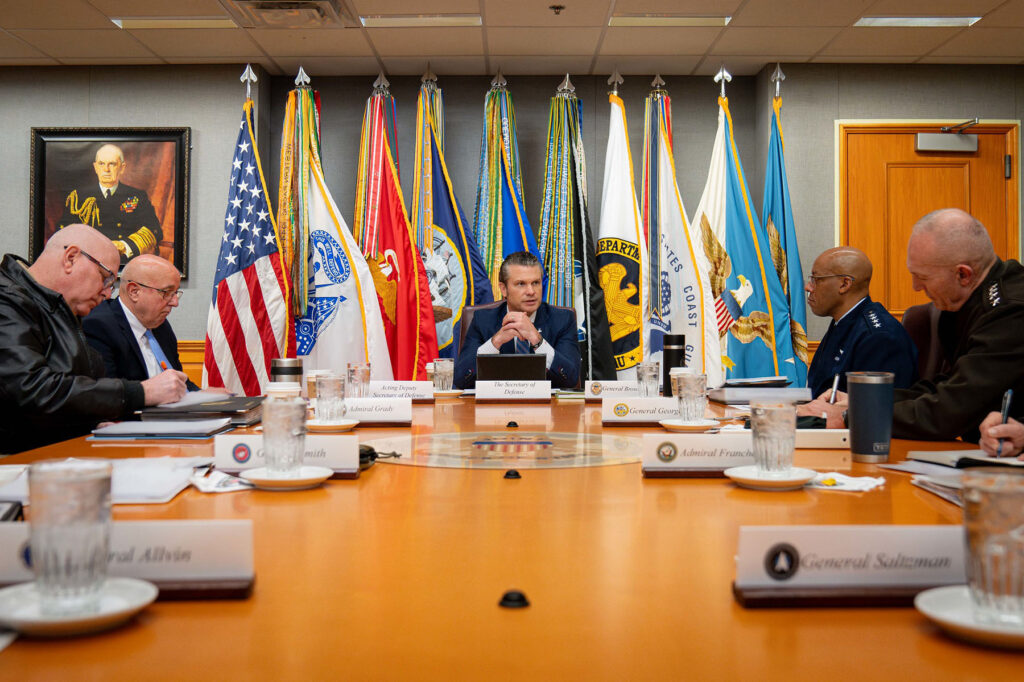In a sweeping move that underscores the Trump administration’s emphasis on government downsizing and efficiency, Defense Secretary Pete Hegseth has unveiled a plan that will eliminate more than 120 high-ranking military officer positions across active duty and National Guard forces.
This unprecedented reorganization targets the upper echelons of the military, trimming as many as nine four-star general slots and slashing dozens of other senior roles in a bid to refocus resources and reduce costs.
The reductions are part of a broader initiative aligned with the administration’s push to slim down federal agencies — a campaign backed by President Donald Trump and advanced through the Department of Government Efficiency, led by ally Elon Musk.
Dennis Quaid’s #1 Warning for Americans
According to data compiled by The Associated Press, Hegseth’s plan will eliminate 20% of the 44 authorized top active duty general and admiral positions and 10% of more than 800 one-, two-, and three-star jobs across all service branches.
“This is not a slash and burn exercise meant to punish high-ranking officers. Nothing could be further from the truth. This has been a deliberative process,” Hegseth explained in a video outlining the initiative.
He dubbed the effort the “Less Generals, More GIs” plan, emphasizing that the intent is not to shrink the military’s overall size but to streamline the chain of command and allocate more resources toward lower-ranking troops.
The plan would impact every branch of the U.S. military — Army, Navy, Air Force, Marine Corps, Space Force, and National Guard — and touch various levels of command, including regional and functional joint commands.

Positions at key commands such as U.S. Africa Command, Central Command, and Cyber Command could be consolidated or downgraded.
The Army, being the largest military branch, is expected to bear the brunt of the cuts.
With a statutory maximum of 219 general officers, Army officials have reportedly begun drawing up proposals to merge or shutter headquarters and staff units.
Up to 40 general officer billets could be eliminated under these plans.
The Marine Corps, on the other hand, will see minimal changes at the top. The Corps currently has only two four-star generals, and its command structure is already lean.
“Due to the already lean nature of the general officers in the Marine Corps, any cuts to Marine general officers will have an outsized impact to the Corps relative to other services,” said Lt. Col. Josh Benson, a Marine Corps spokesman.
He noted that about one-third of the Marine generals already hold multiple assignments and that 10 positions are currently vacant.
Similarly, the Space Force — the newest and smallest military branch — will see limited reductions. It currently has just 21 authorized general officer positions, including only two four-star slots.
The proposed cuts will also affect the joint command structure, which currently permits no more than 232 general and flag officers across all services.
Mergers of regional and functional commands are under consideration as part of a broader Pentagon review of leadership structure.
National Guard leadership is also undergoing restructuring following an internal review conducted last year. The analysis identified over 30 general officer roles among the 133 positions that could be eliminated.
Of those, six positions will be removed from the Guard Bureau headquarters, while the remainder will be drawn from general officer posts at other government agencies, including the FBI, CIA, and military commands.
MORE NEWS: Troy Meink Confirmed as Secretary of the Air Force Amid Modernization Push and Controversy
However, adjutants general — who lead the Guard in each state and are appointed by governors — will not be affected.
While the changes are framed as a modernization and efficiency measure, they have drawn criticism from some Democratic lawmakers.
Critics argue the move could politicize military leadership and potentially sideline officers who disagree with the Trump administration’s policy direction.
The announcement also comes during a period of heightened global tensions, with ongoing conflicts in Gaza and Ukraine and American troops deployed across various hotspots including Syria.
Still, Hegseth and his team remain resolute. They contend that reducing top-heavy leadership will cut salary costs without compromising mission effectiveness and will allow younger officers to take on more responsibilities.
“More generals and admirals does not equal more success,” Hegseth said. “We believe in a leaner, more agile command structure that empowers capable leaders at all levels.”
Congress has long capped the total number of high-ranking officers across the services: 219 in the Army, 171 in the Air Force, 150 in the Navy, 64 in the Marine Corps, and 21 in the Space Force.
Additionally, limits exist for each rank — 27 four-star officers, 153 three-stars, 239 two-stars, and 210 one-stars across the services.
MORE NEWS: Navy Accelerates Development of Nuclear Weapons Systems to Strengthen Strategic Deterrence
The new policy aims to stay within those bounds while redistributing resources more effectively.
As the Pentagon moves forward with the reorganization, service branches will begin identifying which billets to downgrade or eliminate.
Officials have indicated that most changes will occur through natural attrition, with retiring officers not being replaced and certain roles phased out over time.
Though the full implications of the plan remain to be seen, the “Less Generals, More GIs” approach marks a significant shift in the structure of U.S. military leadership — one that could reshape command culture for years to come.
Join the Discussion
COMMENTS POLICY: We have no tolerance for messages of violence, racism, vulgarity, obscenity or other such discourteous behavior. Thank you for contributing to a respectful and useful online dialogue.